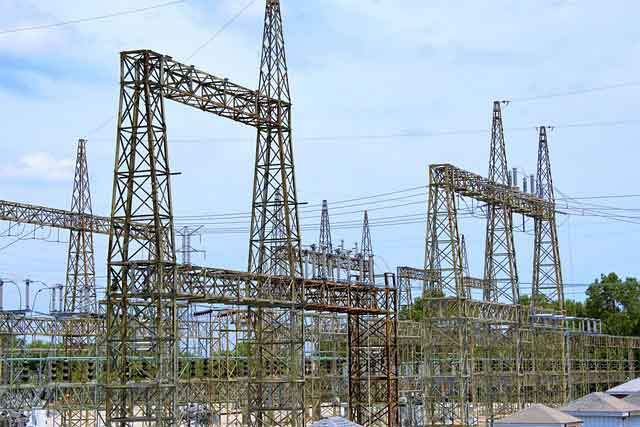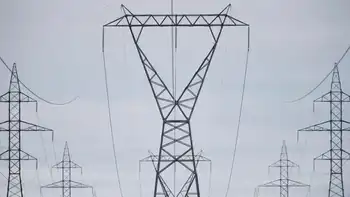Arguments erupt as utilities cut residential trees
By Associated Press
Substation Relay Protection Training
Our customized live online or in‑person group training can be delivered to your staff at your location.

- Live Online
- 12 hours Instructor-led
- Group Training Available
When they threatened her beloved white pines, O'Neill joined other residents battling their power company over its pruning and felling of trees near transmission lines. Residents complained to town officials that the company cut their trees without proper authority.
It is one of several such showdowns in the U.S. this year that have led to lawsuits, legislation, protests and, occasionally, compromise.
"It was like your house was robbed," said O'Neill, 37, who saved her pines in Blauvelt, N.Y., in New York City's northern suburbs, but lost a swath of tall bushes and saplings on a utility right of way that shielded her backyard from a road. "You just feel so violated."
Utilities say aggressive pruning and cutting is a necessary response to federal pressure for more reliable power.
Contact between trees and power lines contributed to the 2003 blackout across the Northeast, which cut electricity for 50 million customers in eight states and Ontario.
Until then, tree-trimming along power lines had been largely unregulated, but a federal oversight agency now mandates standards that took effect last year.
The new rules apply to high-voltage transmission lines, which feed electricity from substations and service towers to the lower-voltage distribution lines that run along most streets. A branch or tree that downs a distribution line can cut power to a street or neighborhood, but a similar problem on a transmission line can affect all of the connecting distribution lines and many more customers.
The North American Electric Reliability Corporation developed the rules with oversight by the Federal Energy Regulatory Commission.
"They say 'Thou shalt never have an outage from a grow-in,'" and utilities take heed because violators can face multimillion-dollar fines, said Randy Miller, president-elect of the Utility Arborists Association and director of vegetation management for PacifiCorp, which provides power in six Western states.
Last month, federal regulators issued the first round of violations under the new rules, fining Baltimore Gas and Electric Co. $180,000 and Iowa-based MidAmerican Energy Co. $75,000, respectively.
Maryland legislators unsuccessfully tried to pass tighter regulations on pruning by utilities and criticized Baltimore Gas and Electric for aggressive trimming in Baltimore's suburbs.
Most utilities follow industry standards outlined by the International Society of Aboriculture, but the best pruning and cutting practices aren't always aesthetically pleasing.
"It's not just the convenience of the circuit, but people's lives, people's livelihoods depend on that power," said Geoff Kempter, manager of technical services for Asplundh Tree Expert Co., a utility contractor based near Philadelphia.
Industry experts say today's pruning debates — sometimes in suburbia, sometimes in more rural areas — stem from people being accustomed to the flexible and less controversial trimming practices in the past.
In Shelby Township, Mich., and the surrounding area 25 miles north of Detroit, one resident filed a lawsuit and several more are considering litigation to prevent ITC Transmission Co. of Novi, Mich., from clear-cutting, or removing all trees in an area.
"This has been devastating on people who for years have lived in an environment where the trees coexisted with the power lines," Mayor Ralph Maccarone said.
Cutting down potential hazards is often the most responsible and cost-efficient long-term step for utilities and customers who could see rates increase to cover maintenance, said Randy Miller of PacifiCorp.
"If utilities are trying to save money, it's their rate-payers they're trying to save," he said.
Duke Energy Corp. heard similar complaints in two southwest Ohio townships where residents said the company was being lazy by chopping down trees and eliminating the need for future pruning.
After Duke customers complained at town hall meetings and posted signs warning contractors to stay off their land, Duke's Ohio and Kentucky operations suspended trimming and cutting near transmission lines until representatives could evaluate individual properties.
Duke agreed to prune potentially hazardous trees when possible instead of clear-cutting near homes, but residents worry that loopholes will allow the company to unnecessarily chop trees.
Maureen O'Neill's power provider, Orange and Rockland Utilities Inc., made a similar agreement after the conflicts with residents of Blauvelt. Utility spokesman Michael Donovan said the company conceded that some trees had been cut in error and worked with customers to restore vegetation and replant trees. It also improved communication with customers.
O'Neill said she thinks the power company did the right thing by working toward cooperation and compromise in some cases, but she doesn't think all residents who challenge utilities will be so lucky.
"There's no choice for them, and there's no choice for us," she said.











